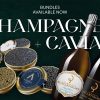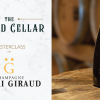Building a collection can be an equally exciting and daunting experience. Starting a collection can expand your knowledge of the world of wine, refine your palate, expand your view of the world and if the right steps are taken can also be a significant investment for your future.
If you are just starting out its important to not fall into the “I’ll just buy a whole bunch of different wines and that will be my collection” mindset.
If the right steps are taken collecting wine can be a satisfying endeavour, however if the cellar lacks direction and structure you could end up with a large amount of wine that can be a waste of time, space, and your hard-earned dollars.
My time spent curating wine collections for restaurants taught me to follow a certain set of rules to ensure that you have an exciting collection that is not only an extension of your personality but also one that can potentially reward you financially and open yourself to new experiences.
Here are my steps to curating a cellar. These steps can apply to new collectors and also seasoned wine aficionados that might want a re-think of their current cellars.
Step 1. The Budget.
To most collectors this will be the major factor that will shape the cellar both new and old. Assess your personal circumstances and set a budget that you will use to put into your new or existing cellar. Once you have determined your starting budget make sure you stick to it. It can be very easy to spend more when you start filling up spaces in your wine fridge or wine racks. Empty shelves or slots in a rack can often tempt you to fill them. But it is important to stick to the budget as things can get out of hand very quickly.
Over time your budget may increase or decrease depending on your personal circumstances. Should you be in a position where you are able to increase your budget then your collection will grow. If your budget is not flexible, don’t despair, you don’t need to have an enormous collection to have new and exciting experiences.
Step 2. Wine Storage
If you plan to invest in a wine cellar, proper storage is a high priority. If you do not have the right conditions to store wine, then your collection will be limited, and the risk of spoilage is increased. Wine is fragile and requires a constant cool temperature and high humidity to keep corks from drying out. A shift in temperature of 5 degrees over the year can have a dramatic effect.
If you intend to have a small collection, invest in a wine fridge. These can range from $800.00 for a small 30-50 bottle fridge to $8000.00 for a large 100-200 bottle fridge.
Renting space in a dedicated wine storage facility might be a good option if you lack the space in your home for a wine fridge. Most storage spaces charge a monthly rate for small lockers all the way to vaults for larger collections. If neither of these are an option, then I suggest finding the coolest place in your home. The Laundry room can be a good option as this space is often lined in tiles and is normally in a tucked away location of the home that stays relatively cool. Under a staircase can also be a good area to keep wines. Avoid places like the garage or kitchen. Heat will damage wines and these areas of the home are often exposed to heat.
If you are unable to rent storage or purchase a wine fridge, I would recommend that you not spend large amounts of your budget on trophy bottles, without proper storage conditions the chance of these wines spoiling increases.
Step 3. Create a cellar plan.
Once your budget has been established, it’s now time to create a cellar plan. A cellar should be a mix of wines that fall into the following categories:
- Wines for long term ageing– 10+ year
- Wines for medium term ageing – 3-8 years
- General wines to drink now – Everyday wines
- Special occasion wines that can be drunk now (this can also contain wines from
category 1 & 2)
There are certain varieties in both red and white (this includes sparkling and sweet wines) wines that can age for long periods, while others may not reward any cellaring and are made for early consumption. Red wines are often the easiest to categorise in your cellar as the fuller bodied varietals like Cabernet Sauvignon, Shiraz, Tempranillo, Malbec etc. contain enough tannins and structure to put aside for many years. Even if you aren’t 100% sure of the producer or have never tried any of these varieties before, in almost all cases they can be put aside for a minimum of 3 years or more.
The lighter bodied red varietals like Pinot Noir, Grenache, Gamay etc. are a little more difficult to determine the age-ability. In most cases they are made for early drinking and are often more enjoyable at an early stage so you can either place them in category 2 or 3, however there are many producers and regions that produce wines from these varieties that can stand the test of time and reward upwards of 20 years in the cellar.
I find price is often a good indicator of cellaring potential in wine. For example, A shiraz that costs $20.00 is not going to be able to age for as long as a shiraz that is priced at $100.00. Wines that cost more are often attributed to higher costs of production (in most cases). The winemaker who is charging $100.00 per bottle has increased costs that may come from more time in the vineyard tending to the vines to produce higher quality fruit at lower yields. They might use a higher portion of new barrels to age the wines in as opposed to the $20.00 wine that has little to no oak and lower vineyard and fruit costs.
For white wines this is a little more challenging. White wines are generally made to be consumed earlier and when they age, the change in the wines flavour is dramatic compared to aged reds. With white wines ageing them can also be a matter of your personal taste. Australian Riesling from iconic areas like the Clare Valley can take on strong Kerosene aromas and the fresh lime and citrus flavours normally associated when young become more muted with honeyed notes dominating the flavour profile.
For the white wine section of my cellar, I like to buy wines and place them into category 2. I appreciate the older white wines, but my preference is to have aged characters adding complexity to the vibrant fruit notes of young wines. Therefore, I like to keep white varieties like Riesling, Chardonnay, Semillon etc. for 3-8 years. If there are whites in my collection that are older its only from producers and vintages that I know require more time to gain that extra level of complexity that I like in my whites.
Step 4. Start Purchasing
Now we get to the exciting part of creating a wine cellar. There are many wine retailers and merchants to start your journey with, but make sure you choose carefully especially when purchasing high value and older wines for categories 1 and 4. You want to make sure you are confident that the bottle of Penfold’s Grange or Chateau Latour that you are buying has been stored correctly from the time it arrived in the country and before it goes into your cellar. Choosing a good and reliable retailer is key as you will find that building a relationship with them will help grow your cellar and the knowledge gained from the merchant will be valuable in your own personal wine journey.
When purchasing general wines for category 3, you might find your local wine store or a larger retailer another option. The bigger retailers will carry a larger range of wines from all over the world and this process can be easier to carry out. I often find myself visiting numerous wine stores or walking through large liquor markets to see what catches my eye or if there are any bargains to be found.
Always ensure that you are purchasing wines from a reputable retailer that is well known in the industry. Only deal with retailers that specialise in fine wines and have the experience and knowledge in the field. The best Merchants will only buy wines from official distributors or deal with the wineries directly, they will store all the wines in a controlled environment to ensure customers are getting the best possible wine and can recommend wines that will be suited to your tastes and budget.
Step 5. Get Help
If you aren’t confident in doing any of the above on your own or lack the time needed to plan and execute. There are businesses like ours that can help curate a collection for you. This takes the guess work out of the process and can be a convenient way in building a long lasting and rewarding cellar.
The wine world is diverse and exciting, it’s a landscape that is constantly evolving. It can be an incredibly rewarding pursuit as the experiences that it can open to the drinker is endless. Fine wine and collecting was often seen as a hobby for the wealthy and affluent, but this isn’t the case. Anyone can be involved as great wine is not necessarily expensive wine and having a collection can mean having a fridge with 50 bottles or having a cellar with 10,000 bottles.



